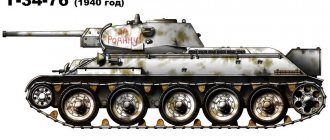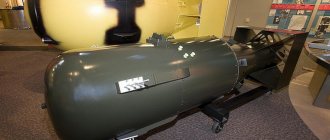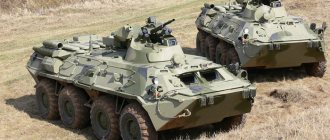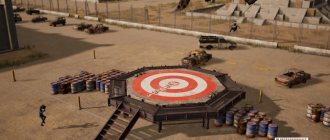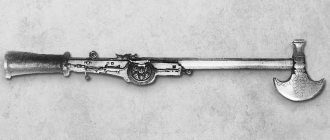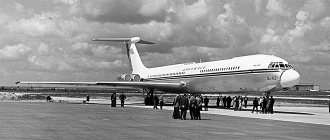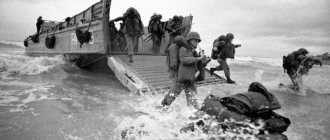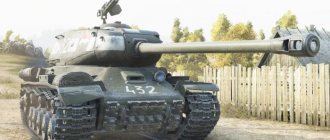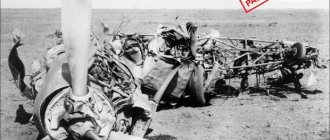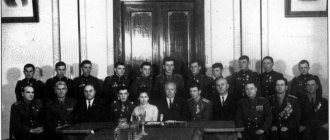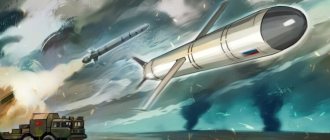During the Great Patriotic War, the USSR did not produce armored personnel carriers intended to deliver units during battle. There were only wheeled cannon and machine gun armored vehicles built on the basis of GAZ or ZiS commercial trucks.
After the end of hostilities, the question arose of creating a new vehicle, especially since there was experience in using American armored personnel carriers supplied under Lend-Lease. The German Sd.Kfz.250 and 251 half-track vehicles, which were widely used by the enemy during the war, also made their contribution, and our troops did not disdain trophies. The result of these developments was the BTR-152 wheeled armored personnel carrier, which was produced in a circulation of more than 12.4 thousand copies and is in service with a number of countries to this day.
BTR-152 TTX, Video, Photo, Speed, Armor
The BTR-152, a heavy three-axle all-wheel drive armored personnel carrier, began to be designed by the designers of the Moscow Automobile Plant in November 1946. B. M. Fitterman (leader), K. M. Androsov, Petrenko, V. F. Rodionov, P. P. Chernyaev, N. I. Orlov and others took part in the development of the design of the BTR-152 armored personnel carrier. the armored personnel carrier successfully passed state tests, and on March 24, 1950 it was put into service. The work of the creators of the armored personnel carrier was highly appreciated. They were awarded the State Prize in 1950.
further reading
- Brian Perrett, Soviet Armor Since 1945
, Blandford Press, London, 1987. ISBN 0-7137-1735-1 - David Markov and Stephen J. Zaloga, Soviet/Russian Experience in Armor and Artillery Design from 1945 to the Present
, Andrew Hull. ISBN 1-892848-01-5 - Jane's Armor and Artillery 2005–2006
- Mustafa El-Assad, Civil Wars Volume 1: Weapons Trucks
, Blue Steel Books, Sidon 2008. ISBN 978-9953012568 - Samer Kassis, 30 Years of Military Technology in Lebanon
, Beirut: Elite Group, 2003. ISBN 9953-0-0705-5 - Samer Kassis, Véhicules Militaires au Liban / Military vehicles in Lebanon 1975–1981.
, Trebia Publishing, Chyah 2012. ISBN 978-9953-0-2372-4 - Samuel M. Katz and Ron Volstad, Battlefield Lebanon
, Concord Publications, Hong Kong, 1990. ISBN 962-361-003-3 - Laurent Touchard, Guerre dans le bush!
The Blind Fighting of the Rhodesian Army (1964–1979) , Batailles & Blindés Magazine No. 72, April–May 2016, pp. 64–75. ISSN 1765-0828 (in French)
BTR-152 - video
The layout of the medium armored personnel carrier was identical to the layout of the BTR-40 medium armored personnel carrier. It also included four compartments, located along the length of the hull from bow to stern in the following order: power plant (engine), control, landing, which, if necessary, could be used as a fighting compartment, and transmission, located under the first three compartments. The BTR-152 armored personnel carrier was made according to a frameless design, providing less weight due to the elimination of the frame and a lower overall height. This scheme provided for attachment to the armored body of the vehicle, which had the necessary strength and rigidity of the engine, transmission units and components, and the chassis of the serial ZIS-151 truck.
The armored personnel carrier was missing a roof in the troop compartment; there were embrasures, covered with armored flaps, for firing personal weapons of paratroopers from the doors in the control compartment and the aft part of the troop compartment. The control compartment provided for the placement of two people - the driver and commander of the armored personnel carrier, and the airborne compartment - 17 people. Observation devices were installed in the inspection hatches of the driver and commander of the armored personnel carrier - multilayer glass blocks with a wide view.
The BTR-152 armored personnel carrier was armed with a SGMB machine gun, model 1949, which could be mounted on one of four swivel brackets - the course mount (main), installed above the control compartment, the side mounts and the stern mount. The angles of horizontal fire of the machine gun mounted on the course and stern brackets were 170, and on the side brackets 120-145 degrees, the vertical fire of the machine gun ranged from -15 to 4-43 degrees. The armored personnel carrier's ammunition capacity was 1,250 rounds (5 belts).
The BTR-152 armored personnel carrier was equipped with a tank shortwave transceiver radio station R-113. The layout of the engine, components and transmission components of the armored personnel carrier was simple. It made it possible to significantly reduce the wheelbase compared to the same parameter of the base vehicle (by 385 mm), which ensured a reduction in the overall length of the vehicle. In order to obtain good traction and speed qualities of the armored personnel carrier, the power of its engine, which allowed boosting the crankshaft speed and compression ratio, was increased to 80.9 kW (110 hp). The armored personnel carrier's suspension, which consisted of longitudinally located semi-elliptical springs with double-acting hydraulic shock absorbers for the front axle and a balancer for the rear bogie, provided the ability to move on dirt roads and terrain at a fairly high average speed - up to 20-25 km/h. The armored personnel carrier had 38 lubrication points, requiring different types of grease and oils for 55 lubrication points. The size of the profile obstacles overcome by the armored personnel carrier has remained virtually unchanged compared to its base vehicle.
In 1950, in parallel with the main model of the armored personnel carrier, its modification BTR-152A was developed, armed with two twin large-caliber 14.5-mm KPV machine guns, model 1944, designed to destroy airborne targets flying at an altitude of up to 2000 m, and lightly armored targets at a distance of up to 1000 m, which were installed on a turret in the troop compartment, providing circular horizontal fire with an elevation angle of up to 90 degrees. The ammunition consisted of 1200 rounds of machine gun ammunition (24 belts). The number of paratroopers for this modification was reduced to eight people.
The layout of the engine, assemblies and transmission components of the modification of the BTR-152V armored personnel carrier has practically not changed compared to the layout of the main model, with the exception of the winch drive elements additionally included in it. The suspension of this modification of the armored personnel carrier has remained virtually unchanged.
In 1955, in parallel with the modification of the BTR-152V armored personnel carrier, its modification was developed - the BTR-152E, armed with two coaxial large-caliber 14.5-mm KPV machine guns, model 1944, which were installed in its troop compartment similar to the BTR-152A armored personnel carrier. In 1955, a modification of the BTR-152V armored personnel carrier was developed and began mass production, differing from the main model it replaced in the units and components of the transmission and chassis of the new vehicle (ZIL-157), increased profile tires (12.00-18″ instead of 9.00 -20″), a system for regulating internal air pressure in tires with an external air supply to the tires, an air compressor of increased performance with a water-cooled head, an increased gear ratio of the final drive of the axles, a winch, a carburetor and an engine starting heater.
In 1958, a modification of the BTR-152V1 armored personnel carrier was developed and began mass production, which differed from the BTR-152V armored personnel carrier in a more advanced system for regulating the internal air pressure in the tires - with an internal air supply to the tires, plain bearings for the balance suspension hubs of the rear bogie, which replaced rolling bearings, installation of a night vision device for the driver and a heater for the control compartment and troop compartment. The driver's night vision device (mod. TVN-2) was a periscopic binocular optical system with an electro-optical converter of an invisible image of an object into a visible one when the road and objects are irradiated with infrared rays. In 1959, another modification of armored personnel carriers of this type was developed and began to be mass-produced - the BTR-152K, which differed from previously produced models in its body with an armored roof, which made it possible to protect the personnel in the airborne compartment from fire from above, and to seal the control compartment and the airborne compartment. In the roof of the hull there were three hatches with roofs for landing (disembarking) paratroopers and two inspection hatches. In order to maintain the combat weight of the modification as the main model, the number of paratroopers was reduced to 13 people.
Inside the BTR-152
Recommendations
- ^ a b c d f f gram hour i j k l
“soft earth.” Archived from the original on December 30, 2007. - ^ a b c d f g gram h i j k l m p o p q
“Armored personnel carrier BTR-152.” Retrieved December 24, 2014. - "BTR-152". Archived from the original on February 10, 2008.
- ^ a b c d f f gram hour i j k l
Administrator. "BTR 152 [ZSRR] - Pancerni.net." Archived from the original on October 2, 2011. Retrieved December 24, 2014. - ^ a b c
AMW - Agencja Mienia Wojskowego Archived March 1, 2007 Wayback Machine - ^ a b
Administrator. "BTR 152 [ZSRR]: Side 2 - Pancerni.net." Archived from the original on August 18, 2007. Retrieved December 24, 2014. - ^ a b
Green, Michael (1997).
Armored Warfare in the Vietnam War: Rare Photographs from the Wartime Archives
. South Yorkshire: Pen & Sword Books Ltd., pp. 68–69. ISBN 978-1781593813. - ^ a b c d e
Beautiful, Ronald.
Jane's Weapon Systems, 1979–80
(1979 ed.). Macdonald and Janes Publishers Ltd., Pp. 313–368. ISBN 978-0-531-03299-2. - ^ a b c d e g gram h i j k l m p o p q r s
Christopher F. Foss (1976).
Jane's World Armored Fighting Vehicle
(1976 Edition). Macdonald and Janes Publishers Ltd., pp. 262–269. ISBN 0-354-01022-0. - ^ a b
Perrett,
Soviet armor since 1945
(1987) p. 65. - ^ a b c d
Kinnear, James (2008).
Russian armored cars 1930-2000
. Darlington, MD (USA): Darlington Productions Inc., pp. 189–190. ISBN 978-1-892848-05-5. - ^ a b c d f f
Tucker, Spencer.
Encyclopedia of Middle Eastern Wars: The United States in the Persian Gulf, Afghanistan, and the Iraq Conflicts, Volume 1
. Santa Barbara, California, USA: ABC-CLIO, 2010. p. 243 - ^ a b c d f f
"Red Star: BTR-152". Cherbourg-en-Cotentin, France: Elephorm en Alsacréations, Lopez and Houbre. 2010. Archived from the original on October 28, 2014. Retrieved October 29, 2016. - ^ a b c d e f gram h i j k l m p o p q r s t you v w X y z aa ab ac announcement ae af ag ah aj aj ak al
“ Trade registers”. armstrade.sipri.org. Retrieved June 20, 2013. - Institute for Defense Analyzes, various (1995). Soviet/Russian armored vehicle and artillery design practices: 1945-1995.
. Quantico: United States Marine Corps Intelligence Agency. clause 5. OCLC 33890115. - ^ a b c
Schmidl, Erwin A.;
Ritter, Laszlo (2006). Hungarian Revolution of 1956
. Oxford: Osprey Publishing. pp.–47. ISBN 9781846030796. - ^ a b
Campbell, David (2016).
Israeli soldier versus Syrian soldier: Golan Heights 1967–73
. Oxford: Osprey Publishing. pp. 1–61. ISBN 978-1472813305. - ^ a b
Cordesman, Anthony H. (2006).
Arab-Israeli Armed Forces in the Age of Asymmetric Warfare
. Greenwood Publishing Group. paragraph 132. ISBN 0275991865. - ^ a b c
Tom Cooper and Albert Grandolini (January 19, 2015).
The Libyan Air Wars: Part 1: 1973–1985
(2015 Edition). Helion and Co. Ltd., pp. 37–39. ISBN 978-1-909982-39-0. - Cooper, Thomas (2015). Wings over the Ogaden: The Ethiopian-Somali War, 1978–1979.
. Solihull: Helion & Company. pp. 21–22. ISBN 978-1909982383. - Cordesman, Anthony (2016). After the Storm: The Changing Military Balance in the Middle East in the Twentieth Century
. London: Bloomsbury Academic. item 733. ISBN 978-1474292573. - Porter, Bruce D. (1986). USSR in Third World Conflicts: Soviet Weapons and Diplomacy in Local Wars
. Cambridge: Cambridge University Press. pp. 200–201. ISBN 978-0521310642. - Ayele, Fantahun (2014). Ethiopian army: from victory to collapse, 1977-1991.
. Evanston, IL (USA): Northwestern University Press. pp. 113–114. ISBN 978-0810130111. - Easby, David (1981). Weapons and tactics of the Soviet Army
. London: Jane Information Group. pp. 113–114. ISBN 978-0710603524. - Morecraft, Paul L.; McLaughlin, Peter (April 2008) [1982]. The Rhodesian War: A Military History
. Barnsley: Pen and Sword Books. pp. 96–97. ISBN 978-1-84415-694-8. - ^ a b
Wessels, Hannes (2015).
A Handful of Tough Men: The SAS and the Battle of Rhodesia
(First ed.). Philadelphia: Casemate Publishers. pp. 240–241. ISBN 978-1612003450. - Emerson, Stephen A. (2014). Battle for Mozambique: Frelimo-Renamo struggle, 1977-1992.
. Helion and company. p. 89. ISBN 978-1909384927. - Zaloga, Stephen J. (2003). Tank Battles of the Middle Eastern Wars (2): Wars 1973 to the Present
. Hong Kong: Concord Publications. n.. ISBN 962-361-613-9. - ^ a b c d e
Christopher F. Foss (May 16, 2000).
Guide to recognizing tanks and combat vehicles Jane
(2000 ed.). Harper Collins Publishing. item 376. ISBN 978-0-00-472452-2. - ^ a b c d f g gram h i j k l m p o p q r s t
JED Directory of military equipment - Chant, Christopher (1987). Collection of weapons and military equipment
. New York: Routledge and Kegan Paul. pp. 61–68. ISBN 0-7102-0720-4. OCLC 14965544. - ^ a b c
«-152 (BTR-152) :: -. (R1a.ru)". Archived from the original on September 28, 2011. Retrieved December 24, 2014. - "Armored personnel carrier BTR-152." Archived from the original on January 30, 2008. Retrieved January 29, 2008.
- Điểm qua một số chương trình nâng cấp vũ khí nổi bật của VN (P3) - 10. Nâng cấp xe thiết giáp BTR-152 Soha.vn (in Vietnamese)
- BTR-152 Việt Nam nâng cấp thành công “ông già thép” Kienthuc.net.vn (in Vietnamese)
- Nghiệm thu cải tiến, nâng cấp xe thiết giáp BTR-152 Archived June 22, 2014 Wayback Machine Quân Đội Nhân Dân (in Vietnamese)
- "Facts about Guinea-Bissau." Institute for African Security Studies. 2009. Archived January 5, 2009.. Retrieved December 1, 2014.CS1 maint: BOT: source URL status unknown (link)
- Touchard, Laurent (18 June 2013). "Armée malienne: le difficile invaire" [The Malian army: a complex inventory]. Jeune Afrique
(In French). - ^ a b
Guy Martin. "Namibian Defense Forces". Retrieved December 24, 2014. - "Seychelles People's Defense Forces". defenseweb.co.za. October 29, 2013. Retrieved November 4, 2016.
- Simon Baynham (1992). Zimbabwe in Transition
(October 1992). Almqvist & Wiksell International. p. 240. ISBN 978-9122015086. - Henn, Francis (2004). A Little Hot Business: United Nations Forces in Cyprus before and during the 1974 Turkish Invasion
. Casemate Publisher. pp. 67–68. ISBN 9781844150816. Retrieved March 16, 2015. - Army magazine, issue 8/09
- "Armored personnel carrier (APC) BTR-152." www.mmilitaryfactory.com
. - Abbott, Peter (20 February 2014). Modern African Wars (4): Congo 1960–2002
. Weapons 492. Osprey Publishing. paragraph 33. ISBN 9781782000761. - Kassis, 30 Years of Military Technology in Lebanon
(2003), p. 66. - El-Assad, Civil Wars, Volume 1: Weapons Trucks
(2008), p. 95. - Cassis, Véhicules Militaires au Liban / Military Machines in Lebanon
(2012), pp. 58-60. - Yann Maheu, La Guerre Civile Libanese, indescribable chaos!
(1975–1990) , Trucks & Tanks Magazine 41, January–February 2014, ISSN 1957-4193, paragraph 79. - Kassis, 30 Years of Military Technology in Lebanon
(2003), p. 37. - Kassis, 30 Years of Military Technology in Lebanon
(2003), p. 58. - "Mock-up photographs of a Lebanese Tigers Militia BTR-152 in 1/35 scale with an AA QF Bofors 40mm artillery mount, circa 1976." Archived from the original on December 1, 2022. Retrieved February 18, 2022.
- Touchard, Guerre dans le bush!
The Blind Fighting of the Rhodesian Army (1964–1979) , para. 70.
Modifications
BTR-152A with ZPTU-4 anti-aircraft gun
In 1955, several prototypes of the BTR-152A with the ZPTU-4 anti-aircraft gun were manufactured
BTR-152A with ZPTU-2 anti-aircraft gun
BTR-152A (1951) - with a ZPTU-2 anti-aircraft installation from KPV machine guns with a caliber of 14.5 mm. Series in 1952-55. on ZiS, 719 vehicles. Combat weight – 8.6 tons. Crew – 10 people.
BTR-152I
BTR-152I (1957) - control vehicle, with a high closed body. Series in 1957-62. on ZIL and BAZ
BTR-152V1
BTR-152V1 (1957) - equipped with a TVN-2 night vision device and an improved tire pressure regulation system (air supply is carried out through the wheel hub). Series on ZIL (in 1957-59, 611 vehicles) and BAZ (in 1960-62)
BTR-152E1
BTR-152E1 is an export version of the basic BTR-152V1, intended for delivery to the armies of countries friendly to the USSR. Among other things, these machines were supplied to the Middle East, in particular to Egypt.
Operators
Map with BTR-152 operators in blue and former operators in red
Current operators
- Angola: 50[15]
- Cambodia: 30[15]
- People's Republic of China: Reverse engineering as Type 56
[15] - Congo: 20[15]
- Cuba: 150[15]
- Equatorial Guinea: 10[15]
- Ethiopia: 100[15]
- Guinea: 6[15]
- Guinea-Bissau: 20; Type 56
variant[38] - Laos[30]
- Mali: 10 received.[15] Only 1 in service as of 2011[Update].[39]
- Mongolia: 50[15]
- Mozambique: 106[15]
- Namibia: 6[40]
- Nicaragua: 120[15]
- North Korea: 350[15]
- Seychelles[41]
- Sudan: 37[15]
- Syria: 600[15]
- Tanzania: 55, 30 BTR-152 and 25 Type 56
[15] - Uganda: 74[15]
- Vietnam: 160 Type 56
[15] - Zimbabwe: 16[42]
Former operators
- Afghanistan: 100[15]
- Albania[9]
- Algeria: 350[15]
- Bulgaria[9]
- Central African Republic[30]
- Cyprus: 32[43]
- East Germany: 759; German designation SPW-152
[15] - Egypt: 1000; probably replaced by Walid
[15] - Estonia: 5[44]
- Georgia[45]
- Hungary: 160[15]
- India: 250[15]
- Indonesia: 30[15]
- Iran: 300[15]
- Iraq: 200[15]
- Israel: 1500; captured from Egypt and Syria[19]
- Libya[13]
- North Yemen: 20[15]
- Poland: 400[15]
- Romania: 100[15]
- Somalia: 265[15]
- South Yemen: 100[15]
- Soviet Union[8]
- Sri Lanka: 10[15]
- Yugoslavia: 40[15]
- Zaire: small number[46]
Former non-state operators
- Al-Murabitoun: 5; inherited from OOP[47][48]
- FROLINATE[20]
- Kataeb Regulatory Force (KRF): handed over by Israel and Syria[49][50]
- Lebanese Forces: inherited from the KRF and Tigers Militia[51]
- Palestine Liberation Organization (PLO): transferred by the Soviet Union and Syria[9]
- Progressive Socialist Party/People's Liberation Army (Druze PLA): handed over by Syria[52]
- South Lebanon Army (SLA): handed over by Israel[31]
- SWAP/Namibian People's Liberation Army (PLAN): 6; transferred by the Soviet Union and Angola[40]
- Tigers Militia: Surrendered by Israel and Syria[53]
- Zimbabwe People's Revolutionary Army (ZIPRA): 15; transferred by the Soviet Union[54]
Performance characteristics of the BTR-152
Crew, people: 2 Troops, people: 19 Years of production: from 1947 to 1962 Number of production, pieces: 12,421
Weight of BTR-152
— 8.7 tons (8.95 with winch)
Dimensions of BTR-152
— Body length, mm: 6830 — Body width, mm: 2320 — Height, mm: 2410 — Base, mm: 3880 — Track, mm: 1720..1742 — Ground clearance, mm: 295
Armor BTR-152
— Armor type: rolled steel — Hull forehead, mm/deg.: 13 — Hull side, mm/deg.: 6..10.8 — Hull rear, mm/deg.: 9 — Bottom, mm: 4 — Hull roof , mm: 5..8
Armament of the BTR-152
— Machine guns: 1 x 7.62 mm SGMB — Firing range, km: up to 2.3
Engine BTR-152
— Engine type: ZIL-123V — Engine power, l. p.: 110
Speed BTR-152
— Speed on the highway, km/h: 65 — Speed on rough terrain, km/h: 20..50 — Cruising range on the highway, km: 550 — Cruising range on rough terrain, km: 430 — Specific power, l. s./t: 12.3
— Wheel formula: 6 × 6 — Suspension type: dependent spring — Climbability, deg.: 30 — Crossable wall, m: 0.6 — Crossable ditch, m: 0.8 — Crossable ford, m: 0.8
Content
- 1 History 1.1 Development
- 1.2 Service
- 3.1 Former Soviet Union
- 4.1 Current operators
